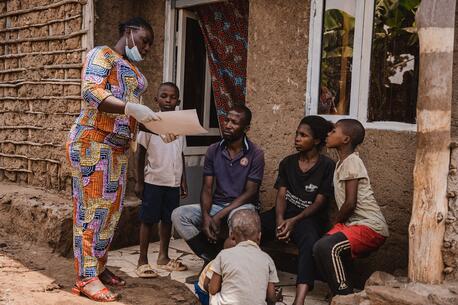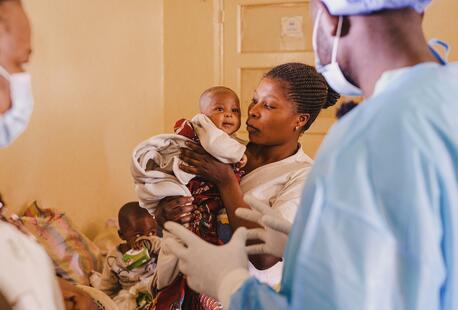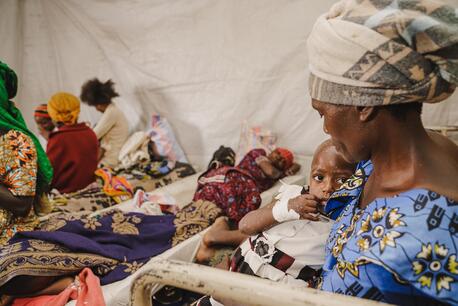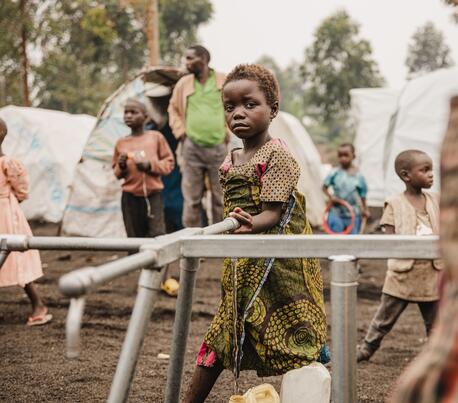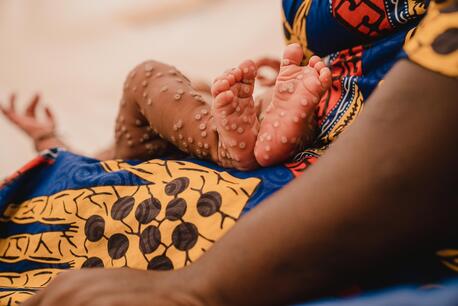
Mpox
A new variant of mpox, or monkeypox, is killing children in Africa. What causes this disease, and who is at risk? The answers to these and other frequently asked questions.
What is mpox?
Mpox, also known as monkeypox, is an infectious disease caused by an orthopoxvirus. It can spread from animals to people and from person to person.
Cases of mpox are most often found in areas with tropical rainforests, home to squirrels, monkeys and other small mammals that are susceptible.
The virus was discovered in 1958 in Denmark in monkeys kept for research. The first reported human case of mpox was in 1970, in a 9-month-old boy in the Democratic Republic of the Congo.
There are two genetic clades of the virus, clade I and clade II. In 2022, there was a global outbreak of clade II mpox, which led to more than 95,000 cases across 115 non-endemic countries.
The 2024 outbreak is a clade I outbreak. The upsurge of mpox cases in the DRC is being driven by outbreaks associated with two variants of clade I, clade Ia and clade Ib.
Clade I mpox tends to cause a higher number of severe infections and have a higher mortality rate than clade II mpox. Most deaths occur in children.
What are the symptoms of mpox?
Mpox causes symptoms that are similar to smallpox, though less severe. Symptoms include skin rash, fever, sore throat, headache, body aches, back pain, low energy and swollen lymph nodes.
Some people who contract mpox get very sick. Most people fully recover within weeks.
How is mpox spread?
The mpox virus is spread through:
- contact with bodily fluids or skin lesions
- inhaling contaminated particles, such as respiratory droplets, from an infected person's mouth or throat
- contact with infected animals while hunting, skinning, cooking or eating
- contact with contaminated materials such as clothing, bedding and eating utensils
Pregnant persons can pass the virus on to their unborn baby.
Who is at risk of mpox?
Anyone can get mpox. Children who get mpox are at higher risk of dying from the disease, especially children already weakened by malnutrition or other conditions.
The DRC is the epicenter of the 2024 outbreak, with children under age 15 representing 56 percent of mpox cases reported in the country. As of mid-August 2024, 8,772 children had been infected since January 2024 and 463 had died.
With the DRC experiencing the largest number of suspected cases ever recorded in a single year, and with the disease spreading to several neighboring countries where it had not been found previously, the World Health Organization declared mpox a public health emergency of international concern on Aug. 14, 2024.
The risk in the U.S. is low, according to the U.S. Department of Health and Human Services. As of Aug. 14, 2024, there were no known cases of mpox in the U.S. and the nation remained "well prepared to rapidly detect, contain, and manage clade I cases should they be identified domestically," HHS stated.
How is mpox diagnosed?
To test for mpox, skin or fluid samples are taken directly from the rash.
According to the World Health Organization, antigen and antibody detection methods may not be useful as they do not distinguish between orthopoxviruses.
What is the best way to stay protected from mpox?
Avoid face-to-face, skin-to-skin, mouth-to-skin and mouth-to-mouth contact with people who have been confirmed to have the virus or who have signs and symptoms of infection.
Avoid touching or sharing personal items like bedding, eating utensils, clothes, phones or other belongings of a person who has the signs and symptoms.
Avoid contact with all wild animals, alive or dead, especially those known to carry the virus, such as rodents or monkeys and those that appear sick or have been found dead.
Wear personal protective equipment if you are caring for a person with mpox.
Those who feel they are at risk are encouraged to get vaccinated with the mpox vaccine, which has been demonstrated to be safe and highly effective at preventing severe disease from mpox.
UNICEF is coordinating with Gavi, the Vaccine Alliance, and other partners on a vaccination strategy in response to the 2024 outbreak in Africa. More on UNICEF's outbreak response efforts below.
Do I have to quarantine if I have mpox?
It is advised to avoid physical contact with others and to stay home until scabs from lesions have fallen off and a new layer of skin has formed.
If you must be around other people, cover all lesions and wear a well-fitting mask.
How does UNICEF respond to mpox outbreaks?
As with other infectious diseases that pose a threat to children and families in countries where UNICEF works, UNICEF takes a multi-faceted approach that includes:
- training and supporting volunteers to communicate risks to the public and to engage community members in prevention and control measures
- providing medical supplies and health worker training to build treatment capacity at health facilities
- distributing hygiene kits to families
- supporting vaccination campaigns to increase immunity
- promoting and enabling data sharing and other measures to improve monitoring and surveillance
Learn more about what UNICEF does to support children's health and to protect children from deadly diseases.
